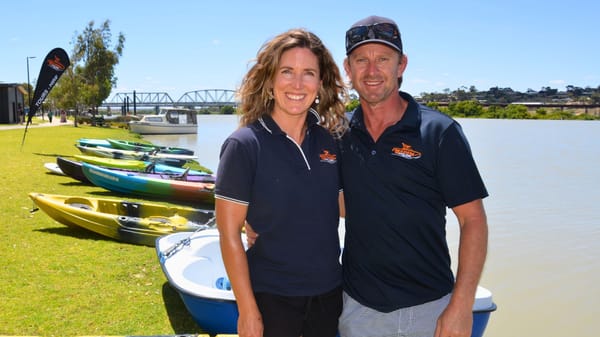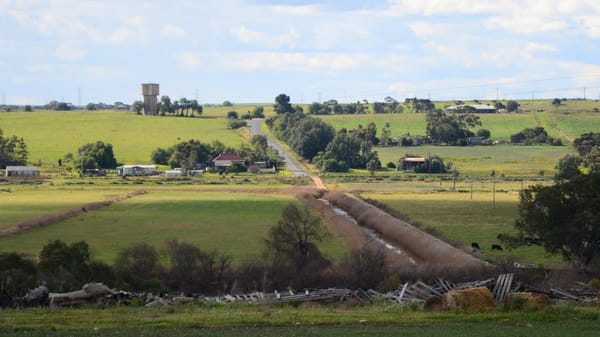Remember Long Island Recreation Park?
Today, Long Island – in the River Murray at Murray Bridge – is wild and overgrown, but it wasn’t always that way.

This post was contributed by Murray Bridge and District Historical Society.

Long Island is situated in the River Murray, east of Murray Bridge, and comprises eight hectares, or 20 acres.
In 1889 the Commissioner of Lands stated that Long Island belonged to the Hundred of Mobilong.
In the early days it was leased from the government for grazing a few sheep.
The local progress association wanted to lease the island for a pleasure resort; for this to happen the government would have to hand it over to the District Council of Mobilong.
During 1909 the island was presumed available.
The council applied to have the island placed under its control, but the island was not dedicated for recreation purposes as promised, possibly as it was an entangled mess of overgrown vegetation.
Over the years it was leased for grazing, subject to keeping the island free of undergrowth.
A Mr Neumann leased it the longest and acted as a caretaker to prevent unwelcome persons camping while having grazing rights for one penny a week.

In 1928 the ownership of the island was transferred from the District Council of Mobilong to the Corporation of Murray Bridge.
By 1930 the island was once again covered in thistles and weeds.
A Mr Wood offered the corporation his assistance in keeping a portion of the island weed-free by acting as caretaker, and be sworn in as special constable, provided they supplied him with a rake, grubber, and wheelbarrow for a weekly wage of 7/6.
This was accepted, provided he lived on the island.
The Friendly Societies’ annual outing in February 1931 was advertised as “a picnic on Long Island”, a sports day event.
The river steamer SS Tarella made several trips during the day.
Mr W Rawlins and Rea from the local branch of the St John’s Ambulance attended, and Mr Wood, caretaker, focused on the coppers for supplying boiling water for cups of tea, coffee or anything else.
They conducted races for boys and girls under eight, under 12, under 14 and 14 and over for boys; three-legged races for under-12 boys and girls; a single ladies’ race; and, for men over 40, a wheelbarrow race.
This turned out to be a yearly event.

By December 1931 Stewart Scott was appointed caretaker of part of Long Island at 10/- a week, with this to be revoked at will.
In 1931, during a big flood, the sanitary conveniences disappeared.
Mr R Wood explained that these would have to be replaced, as February 1932 was booked for picnics and in March the Sunshine Club was to bring 200 members by special train to camp on the island.
Shower baths, two WCs and two large ovens and swings were erected on the island.

In January 1933 a Mrs AA Brooks was granted permission to sell confectionery and light refreshments on the island on special occasions.
Between 1930 and 1939 the island was used on long weekends and for weekly camps, tennis tournaments were conducted, and even the Australian Outboard Motorboat Races were held from there in 1932.
It was a very popular island, sometimes having as many as 1000 people.
Special trains bought people to Murray Bridge and chartered river boats took them to the island.
In 1939 World War II began and in 1940 the island became a training ground for 250 men from the Royal Field Engineers of the 4th Military District of South Australia.
They built various rafts and pontoons in a short amount of time; the largest was used to transport a motor lorry from the banks of the River Murray to Long Island.

During 1957-58 it had protective status under the care, control, and management of the Corporation of Murray Bridge.
By 1966 it was proclaimed a fauna sanctuary and was a closed area that included all surrounding waters within 200 yards of the island.
It was listed on the Register of the National Estate in 1980.
Since then it has been listed under many different government departments under the National Parks and Wildlife Service.
In all likelihood, it will never again have the voices of children at play while adults enjoy the recreation of an island.
The island has been restored to its original condition and has today a large collection of bird life, snakes, and vegetation.
We can still enjoy the island, only at a distance.
- More information: Search for Murray Bridge and District Historical Society Inc on Facebook or visit the society at Murray Bridge’s railway precinct, on Railway Reserve Road, between 10am and 2pm on Tuesdays.
- Read more: Join in … with the Murray Bridge and District Historical Society
You can help keep local stories like this one free for everyone to read. Subscribe to Murray Bridge News today and support your independent, locally owned news service, plus get access to exclusive stories you won’t find anywhere else, from just $5 a month.




